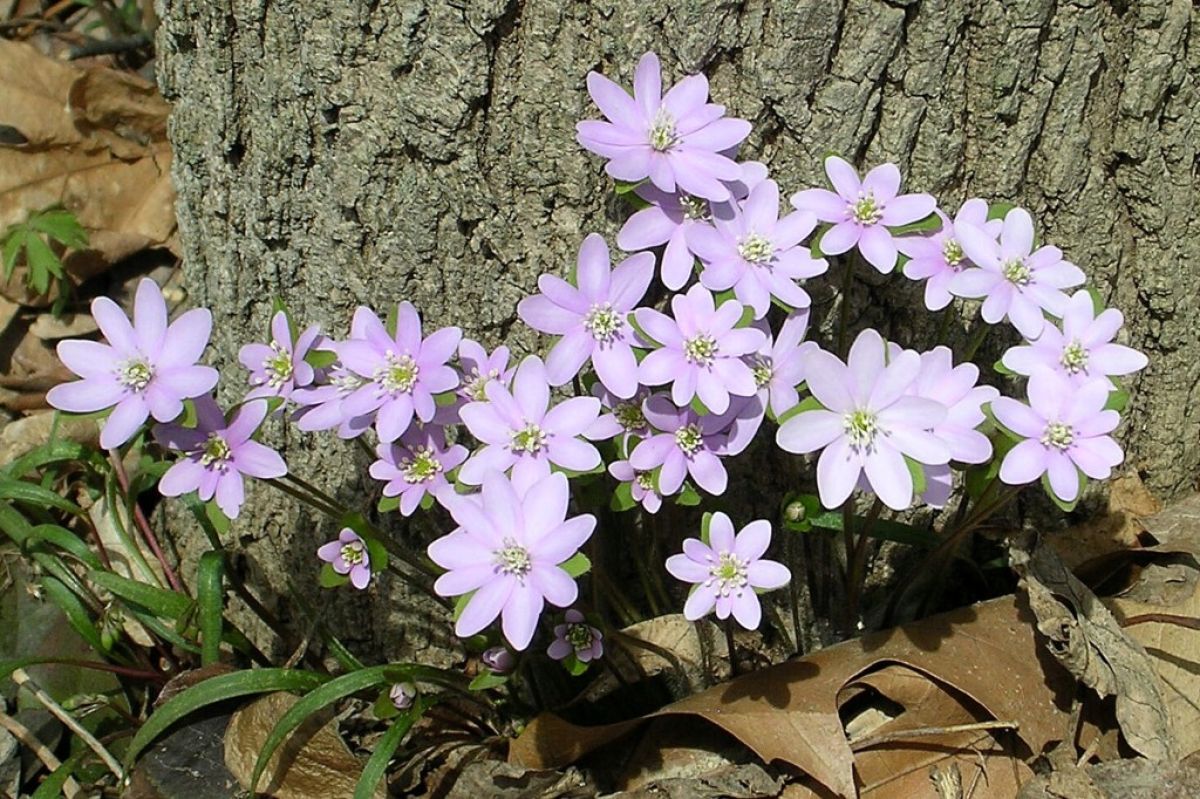We are used to enjoying and appreciating the cultivated flowers we find in gardens, but there is a special joy that comes from finding spring wildflowers during a walk in the woods.
There is the surprise element when we suddenly come upon a dear, little flower that seems even more precious in its untamed surroundings. And there is the fleeting nature of such blossoms, the transience and the good fortune that is ours to saver, when we stumble upon a dear, little blossom. It has a life that will be so brief.
A walk in the woods in early April, when the air is cool and crisp, allows us the delight of discovering sweet little flowers such as the sharp-lobed Hepatica. One of the first to bloom, and often found blooming under melting snowbanks, Hepatica acutiloba likes south facing slopes and has thick fibrous roots.
The tannin in its liver-shaped leaves was used medicinally in centuries past to cure liver ailments.
It is a relative of Hepatica americana, which has more blunt looking leaves and enjoys more acid soil. The tiny pinkish flowers have 6 petals and a shy demeanor, with multiple stamens and arching stems. The leaves sometimes stay green through the winter in protected sites.
This is Moya Andrews, and today we focused on Hepatica Acutiloba.










